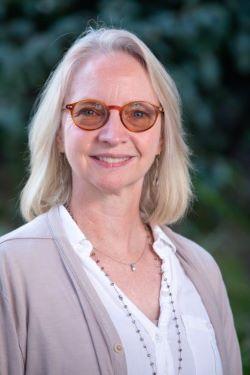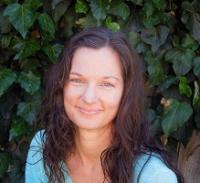Palo Alto University (PAU) professors
J. Kelly Coker, PhD, and
Karen Roller, PhD, co-wrote the textbook
Rethinking Lifespan Development, which focuses on the ages and stages of the human lifespan, as well as the cultural and contextual influences on development (such as one’s identity related to race, ethnicity, religion, disability, sexual orientation, gender, socioeconomic status, and nationality). Coker and Roller currently use this text in their Lifespan Development course within
PAU’s Master’s in Counseling program. The text is also appropriate for other mental health professional programs, such as psychology, social work, and human services.
“The purpose of this book is for students to learn and understand the ages and stages of lifespan development through a lens of culture and context,” says Coker. “We wanted to offer something more than a dry, didactic book where students memorize dates and theorists, and more about the holistic understanding of development.”
All Things Considered
Coker and Roller were two of the four contributors of this book, each of whom was tasked to write about a specific age and stage of development, as well as a corresponding case study. Bringing sociological and anthropological awareness to developmental science, these case studies illustrated individuals from various cultural and contextual backgrounds.
“With all our case studies, we also aimed to situate the client over time within an individual life, within a family life, within a community life, and within a cultural life,” says Roller. “Within these nested systems of culture, there are forces that people don’t have control over and have to deal with—there’s no escaping them. So, when someone breaks the rules of their culture, what does that do to them psychologically, emotionally, and relationally? What impact does it have on mental health when people have to break rules in order to even survive?”
Seeing Themselves Represented
Another positive outcome of adding the culture and context chapters to this textbook is that students of color are finally seeing their stories represented in an academic setting.
“A few of my students who are immigrants have said to me, ‘This is the first time I’m seeing myself in a textbook’,” says Roller. “It has been so fulfilling for me to see students who usually experience marginalization from the beginning to the end of their academic program, and instead their family’s story is being told, and they feel welcome and invited to participate in class discussions.”
Another example of how Coker and Roller value all cultural and contextual identities is the activity they hold on the first day of class—the “Whole Name Project.” Here, each student shares their whole name, what it means, and what it means to their family. If they’ve gone through a name change process, they may also share what that meant to them.
“Right from the beginning, we invite students to bring their whole selves and their whole family story in. And we use a textbook that has the intention of bringing in the whole family system and the whole community,” says Roller. “In doing this, we hope that students realize how important it is to invite their clients in as whole beings from the very beginning.”
Also, given the variation of intersecting identities illustrated in the case studies, all the students are learning from perspectives, identities, and stages in life that are different from their own. This improves empathy and skills as future counselors in that students begin to think about how they would serve a client with a drastically different background.
“With every case study, we drop a pebble in a pond, and we need to know what the ripples are,” says Coker. “Clients come to us with underlying schemas that are developed and formed out of contextual, relational, and environmental experiences and we need to see our clients as whole beings and not just someone who has depression. For me, that’s what was most important about this book.”
Critical Thinking is Paramount
As professors, Coker and Roller strive to make their courses interactive, personal, and reflective. They have moved away from lectures and toward project-based learning and reflective journaling. Examples of homework assignments include having students pick one of the case studies and imagine that this person was their client, or having students look at their own stage of development and assess how that relates to what the client is going through.
Coker and Roller also strive to foster critical thinking among their students. Even though students are learning about theorists related to each age and stage of development (which is required knowledge to pass their licensure exams), students are challenged to poke holes in the theories to better serve their future clients that may have identities counter to these theories that are considered the norm.
“Everything in American education is about ‘what is normal’ and striving and conforming and fitting in with that notion of normal. And that’s the whole problem, not everyone fits nicely into a box,” says Roller.
“For so many people, the narrow frame of what is ‘normal’ will never fit their experience, and they are slapped with the label of abnormal or subnormal,” says Coker. “In the front of the book, we say, ‘we acknowledge you need to learn specifics for the exams, but we’re going to challenge you right off the bat not to accept everything we present in the book as truth.”
As a critical thinking exercise, Coker and Roller put students into small groups and ask them to discuss how a case study illustrates how a development theory is faulty. The professors ask the students questions such as, “What’s wrong with this theory? What can we learn from the theorists but still critique due to limitations and biases in how the theory is presented? And how do we get additional information to support what this theory doesn’t tell us about a particular client?”
“It's not that the theorists are wrong, but it’s the idea that both can be true,” says Coker. “Rather than just memorize developmental theories, the point is to question the theory and discuss ‘What could we use from the theory that might be helpful and what do we need to question and challenge?’ Being able to hold both of those things is what is fun about using this book to teach.”
End of Course Projects
Both Coker and Roller believed that their students really understood the complexity of what they were teaching in this course, evidenced by the quality of their end-of-course projects. The project involved helping someone in their life, considering age and stage developmental theory, as well as cultural and contextual influences, to create helping strategies.
“I was brought to tears, I had goosebumps looking at what our students were producing at the end of the quarter,” says Roller. “That to me was a sign that they understood the intention of centering the client's lived experience along with developmental theory to foster a meaningful engagement with the people they were doing their service projects with.”
The purpose of the final project was for students to learn how to integrate all the factors presented in the course, experience what it’s like to have someone trust them and their guidance, and witness how the teachings of the class come to life when working with an actual person. Students used the book as a resource, learning key aspects of each age and stage of development. For younger students who hadn’t personally experienced the older stages of life yet, the book provided insight into the desires and challenges one experiences later in life.
“Rather than perceive lifespan development as a disembodied, cognitive process that has no relevance to how clinicians connect with our clients, I hope that we are giving our students the experience of feeling how important it is to have empathy for all that their client has been through as well as empathy for what they’ll have to go through going forward, even if they haven’t experienced that stage of life yet,” says Roller. “With this holistic perspective, we hope our students will be able to help their future clients shift toward what is more supportive and beneficial for them. For me, that was the point of the book.”
Learn more about the book,
Rethinking Lifespan Development, published by Springer Publishing. The book also offers access to a podcast.



